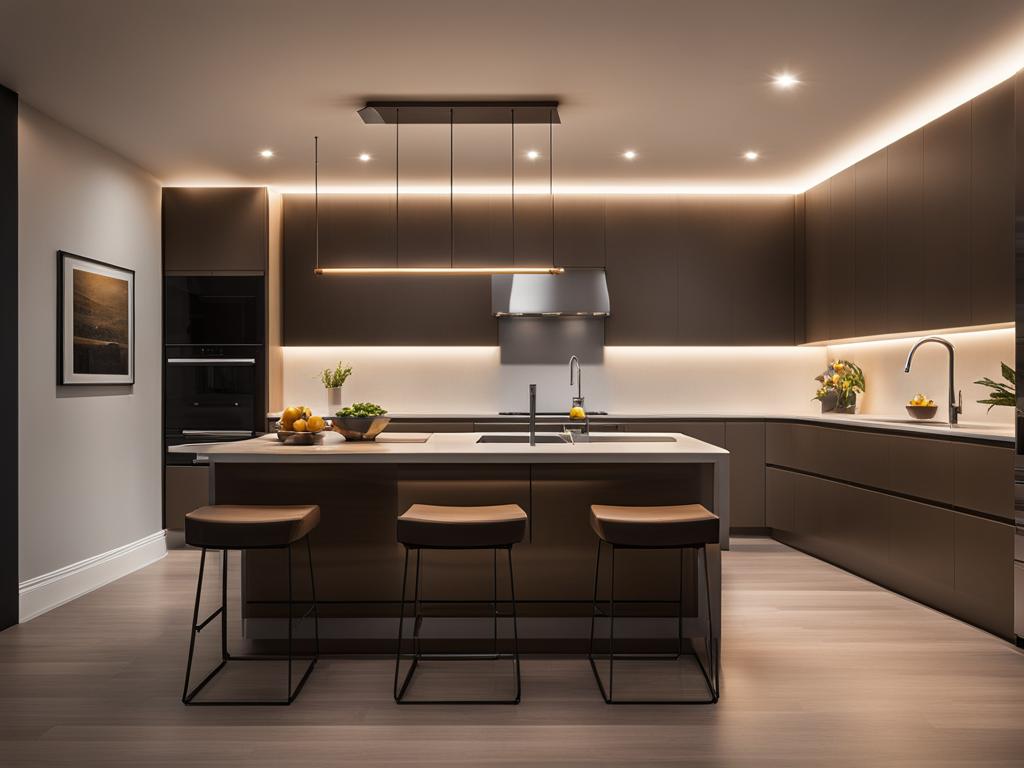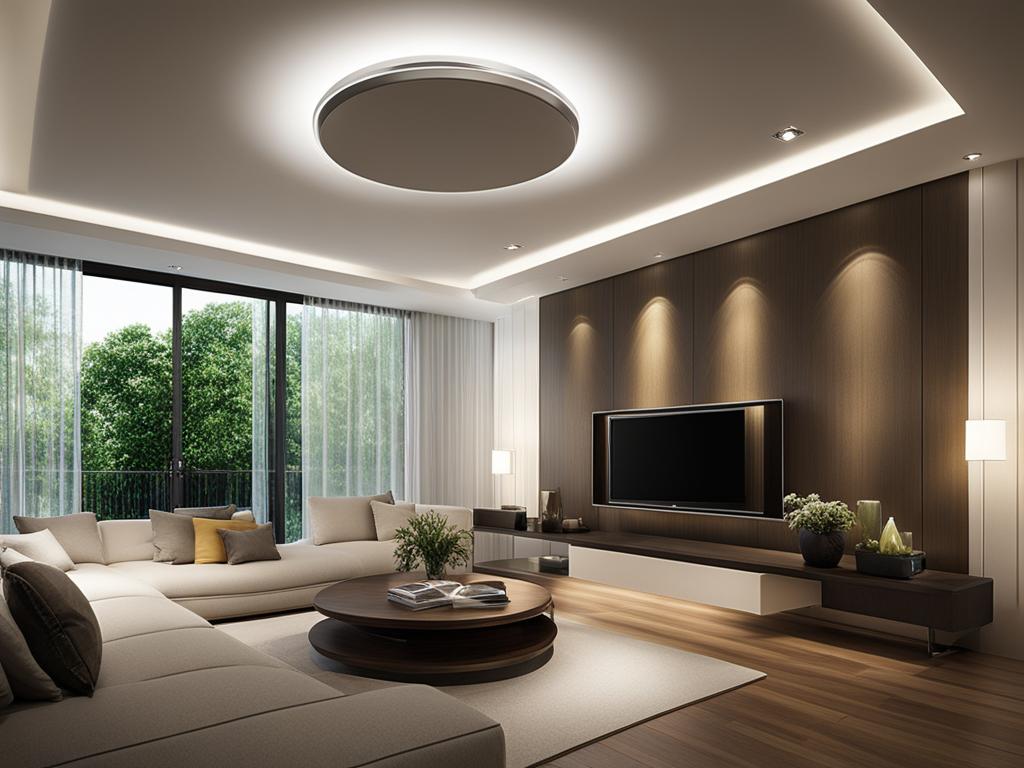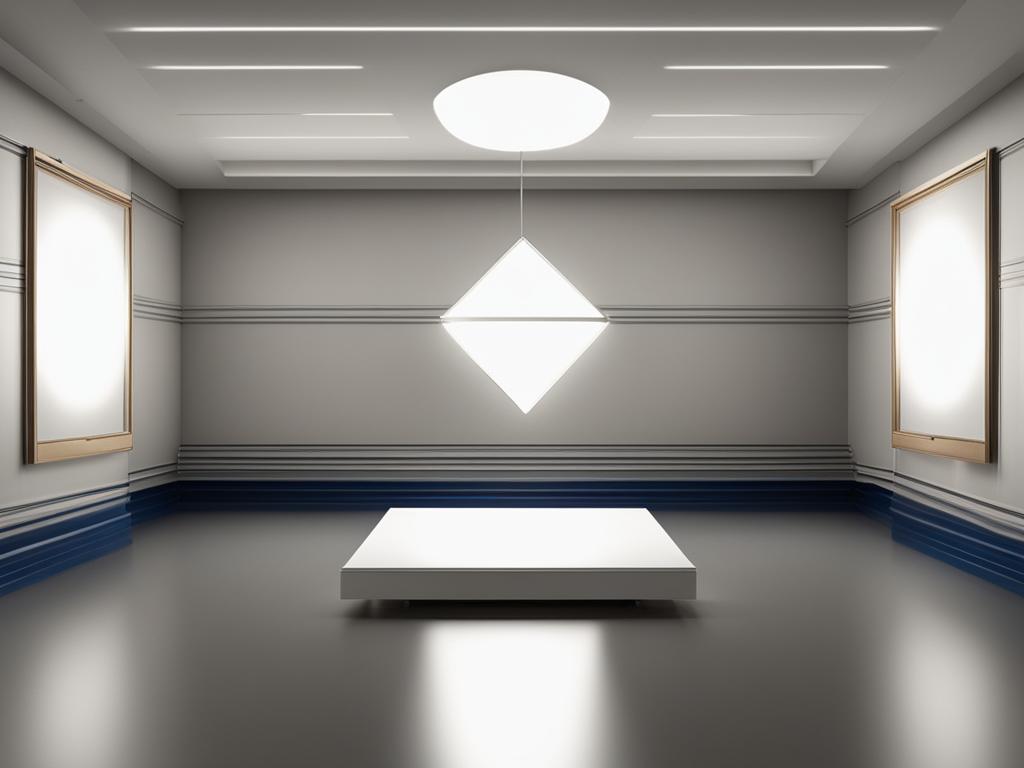When it comes to choosing the right lighting fixtures for your home, wafer lights and can lights are two popular options to consider. Both provide unique features and benefits that can enhance the ambiance and functionality of your living space. In this article, we will compare wafer lights and can lights, helping you make an informed decision about the best lighting choice for your home.
Key Takeaways:
- Wafer lights and can lights are both popular options for home lighting fixtures
- Wafer lights are ultra-thin and energy-efficient, offering a sleek and seamless look
- Can lights provide versatility in bulb choices and are commonly used in new builds
- Your decision should consider factors like energy efficiency, cost, and ease of installation
- Ultimately, the best choice depends on your personal preferences and the specific requirements of your space
What are Wafer Lights?
Wafer lights are ultra-thin lighting fixtures that are often used for recessed lighting applications. These lights have a thin housing and come as a single unit with LED lights attached. They are connected directly to electrical wires without the need for an electrical box. The built-in LED lights are energy-efficient and have a long lifespan of up to 50,000 hours.
Installing wafer lights is easy and they can be used in areas with limited plenum height. They offer a sleek, seamless look and are a cost-effective option.

“Wafer lights are the perfect choice for homeowners looking for recessed lighting solutions that are both energy-efficient and aesthetically pleasing.”
How to Install Wafer Lighting
Installing wafer lighting is a straightforward process that offers both ease of installation and a sleek design. With wafer lights, there is no need to install cans before the ceiling drywall is in place, making the installation quick and hassle-free.
Here is a step-by-step guide to installing wafer lighting:
- Step 1: Determine the desired location for the wafer lights on the ceiling. Mark the spots where the lights will be installed.
- Step 2: Cut holes in the ceiling at the marked spots using a saw or hole saw of the appropriate size.
- Step 3: Connect the wafer lights to the electrical wires, following the manufacturer’s instructions. Ensure that the power is turned off before making any electrical connections.
- Step 4: Insert the wafer lights into the cut holes in the ceiling. Make sure they are securely seated.
- Step 5: Secure the wafer lights in place by tightening the mounting screws or clips provided with the lights.
- Step 6: Restore power to the circuit and test the wafer lights to ensure they are functioning properly.
Wafer lights can be easily installed in areas with small plenum height, where traditional can lights cannot be mounted. Their sleek design makes them a popular choice in luxury home settings, adding a modern and seamless touch to the interior.
Now that you know how to install wafer lighting, you can easily bring a beautiful and efficient lighting solution to your space. Enjoy the benefits of easy installation and a sleek design with wafer lights.
What are Can Lights?
Can lights, also known as recessed or downlights, are lighting fixtures that are fitted in the opening of a ceiling. They are placed in a cylindrical metal structure, which is why they are called “can” lights. Can lights are designed to lie flush with the surface of the ceiling and provide a clean, minimalistic look. They can accommodate a variety of light bulbs, making them a versatile option for lighting.
Can lights offer several advantages:
- They provide a sleek and unobtrusive lighting solution, blending seamlessly into the ceiling.
- Can lights can be used in various settings, including residential, commercial, and hospitality spaces.
- They are compatible with different types of light bulbs, such as incandescent, CFL, and LED, giving you flexibility in choosing the desired lighting quality.
- Can lights are often used to highlight specific areas or objects, creating a focal point in the room.
| Advantages | Disadvantages |
|---|---|
| Provides a clean and minimalist look | May be less energy-efficient compared to wafer lights |
| Compatible with various light bulb types | |
| Offers flexibility in lighting design | |
| Creates focal points in the room |
While can lights offer versatility and aesthetic appeal, it’s important to consider their energy efficiency. In comparison to wafer lights, can lights may consume more energy due to the design of the cylindrical metal structure.
Quote:
“Can lights are a popular choice for homeowners who want a sleek and modern lighting solution. Their ability to blend seamlessly into the ceiling ensures a clean and unobtrusive look.”

How to Install Can Lighting
Installing can lighting is a standard procedure that involves a few simple steps. By following the standard installation procedure, you can easily add can lights to your home. Whether you’re building a new home or renovating an existing space, can lights are a popular choice due to their versatility and sleek design.
Standard Installation Procedure
When installing can lighting, it’s important to follow the standard procedure to ensure a successful installation. Here’s a step-by-step guide:
- Start by checking the installation area and ensuring that it is suitable for can lights. Look for any obstructions or potential issues that may hinder the installation process.
- Next, locate the ceiling joists. These are the structural beams that support the ceiling. It’s crucial to mount the cans securely to the joists to ensure stability.
- Mark the desired locations for the can lights on the ceiling using a pencil or marker. Make sure to measure and space them evenly for a balanced look.
- Using a hole saw or a keyhole saw, create openings in the ceiling for the cans. Follow the manufacturer’s instructions for the appropriate size of the holes.
- Insert the cans into the openings and secure them to the ceiling joists using mounting brackets or screws. Ensure that they are flush with the ceiling surface for a seamless appearance.
- Connect the electrical wiring to the cans according to the manufacturer’s instructions. If you’re unsure about electrical work, it’s recommended to hire a licensed electrician to ensure safety and compliance with local regulations.
- Finally, attach the trims or decorative rings to the cans to complete the installation. Trims come in various styles and finishes, allowing you to customize the appearance of your can lights.
It’s important to note that installing can lights is easier when done before the drywall is placed. This allows for easier access to the ceiling and simplifies the installation process.
Suitable for New Builds
Can lights are particularly suitable for new builds due to their versatile design and easy installation process. They are commonly used in new construction projects to provide efficient and stylish lighting solutions.
Whether you have high or low ceilings, can lights can blend in seamlessly with the surface, offering a clean and modern look. They are especially ideal for low ceilings as they do not take up much space and provide a low-profile lighting option.
Conclusion
When it comes to choosing the best lighting option for your home, the decision between wafer lights and can lights can be challenging. Each type has its own advantages and disadvantages to consider. Wafer lights are a cost-effective choice, offering a sleek and modern look. They are easy to install and can be used in areas with limited plenum height. On the other hand, can lights provide more versatility in terms of bulb choices and have a longer lifespan.
One important factor to consider is energy efficiency. Wafer lights are known for their energy-efficient LED lights, which can help reduce electricity usage and lower your utility bills. Can lights, however, may be less energy-efficient depending on the type of bulbs used. It’s worth evaluating the long-term energy savings when making your decision.
Cost is another consideration. Wafer lights are generally less expensive than can lights, making them a more budget-friendly option. Additionally, the installation process for wafer lights is easier and quicker since there is no need to install electrical boxes. Conversely, can lights may require more time and effort for installation.
In conclusion, there is no definitive answer as to which type of lighting is the best for every home. The choice between wafer lights and can lights depends on your personal preferences, budget, and the specific requirements of your space. Consider factors such as energy efficiency, cost, and ease of installation to make an informed decision. Ultimately, the goal is to have a well-lit and inviting home that meets your lighting needs and enhances the overall ambiance.
FAQ
What are the benefits of wafer lights?
Wafer lights offer a sleek, seamless look, are cost-effective, and have an easy installation process. They are energy-efficient and have a long lifespan.
How are wafer lights installed?
Installing wafer lighting is a straightforward process. Since wafer lights come as a single unit, there is no need for installing cans before the ceiling drywall is installed. This makes the installation process quick and easy.
What are the advantages of can lights?
Can lights provide a clean, minimalistic look and offer versatility in terms of bulb choices. They are commonly used in new builds and are suitable for low ceilings.
How are can lights installed?
Installing can lighting involves a standard procedure that includes checking the installation area and mounting the cans using the ceiling joists. It is easier to install can lights before the drywall is placed.
Which is the best lighting option for homes, wafer lights, or can lights?
There is no definitive answer as to which one is the best lighting option for homes. The decision ultimately depends on personal preferences, budget, and the specific requirements of the space. Consider factors such as energy efficiency, cost, and ease of installation when making your decision.
